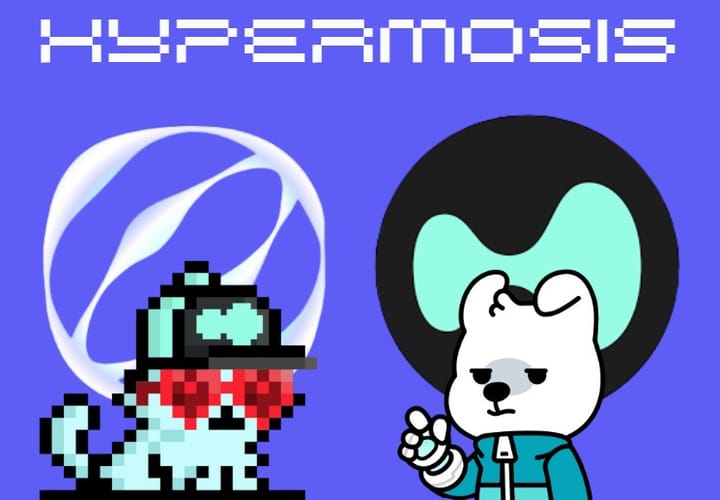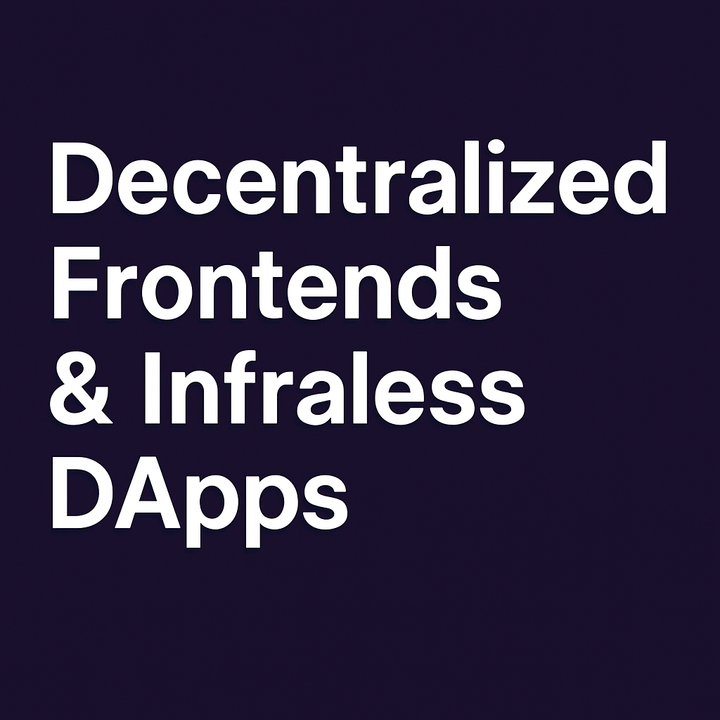Programmable Liquidity: How Mitosis Unifies DeFi's Fragmented Capital
The decentralized finance (DeFi) landscape, a vibrant frontier of financial innovation, promised a future free from traditional intermediaries, offering unprecedented access and efficiency. Yet, as this ecosystem expanded across countless blockchains, a critical challenge emerged: liquidity fragmentation. Assets became siloed on disparate networks, hindering seamless transactions and stifling the very efficiency DeFi sought to achieve. This pervasive problem, characterized by disjointed capital and inefficient markets, has long plagued users and developers alike. But what if a new architectural paradigm could unify this fractured landscape, introducing a revolutionary concept of programmable liquidity to unlock DeFi's true potential?
The Promise of DeFi: A New Financial Frontier
Decentralized finance, or DeFi, represents a profound shift in the global financial system, leveraging blockchain technology to create open, permissionless, and transparent financial services. From lending and borrowing to trading and asset management, DeFi protocols aim to democratize finance, making it accessible to anyone with an internet connection. At its core, DeFi relies on the concept of programmable money, where digital currency can automatically execute predefined actions through smart contracts. This innovation has led to a surge in decentralized applications (dApps) and a burgeoning ecosystem of digital assets. However, the rapid proliferation of new blockchains and Layer 2 solutions, while expanding the overall market, inadvertently created a significant hurdle: liquidity fragmentation.
The Challenge of Fragmentation: A Growing Problem
As the DeFi ecosystem matured, the emergence of numerous independent blockchain networks, each with its own set of protocols and assets, led to a critical issue known as liquidity fragmentation. This means that capital, instead of flowing freely across the entire decentralized landscape, became siloed on disparate chains. For instance, a user might have assets on Ethereum, while a lucrative yield opportunity exists on Solana. Moving these assets traditionally involves complex and often costly bridging solutions, creating barriers to efficient capital allocation. This fragmentation not only complicates the user experience but also undermines the very promise of a seamless, interconnected financial system.
The Consequences of Disjointed Capital: Inefficiency and Slippage
The direct consequences of liquidity fragmentation are far-reaching, impacting both liquidity providers (LPs) and traders. For LPs, it leads to inefficient capital allocation. They must decide which blockchain to allocate their capital to, often splitting funds across multiple chains. This results in shallower liquidity pools on individual blockchains, reducing the overall efficiency of decentralized trading. For traders, fragmented liquidity directly translates to increased slippage—the difference between the expected and executed price of a trade. Large orders on thinly liquid chains can significantly impact asset prices, leading to higher costs and less predictable trade execution. This inefficiency highlights a critical need for a more unified approach to liquidity management.
Hidden Costs and Missed Opportunities: Transaction Fees and Fragmented Yields
Beyond slippage, liquidity fragmentation imposes additional burdens on users in the form of higher transaction costs. Moving assets between chains often requires multiple steps, incurring gas fees on both the source and destination chains, as well as bridge-specific fees. These cumulative costs can significantly reduce profitability, especially for smaller investors, making cross-chain yield farming complex and expensive. Furthermore, it creates fragmented yield opportunities. Users are unable to seamlessly move their assets to chase the best yields across different blockchains, as the costs and complexities of bridging often outweigh the potential gains. This limits the ability of users to optimize their returns and fully capitalize on the diverse opportunities within DeFi.
Market Instability: The Threat of Liquidity Drains
The dynamic nature of fragmented liquidity also introduces a significant risk of market instability. When liquidity shifts rapidly between chains, often triggered by changing yield incentives, governance updates, or shifts in market sentiment, DeFi platforms can experience sudden liquidity shortages. This can lead to unpredictable price swings and even "liquidity drains," where a protocol's ability to facilitate trades or loans is severely hampered. Such instability makes DeFi applications unreliable for both traders and liquidity providers, eroding trust and hindering widespread adoption. The need for a more robust and interconnected liquidity solution becomes paramount to mitigate these systemic risks.
Enter Mitosis: A New Paradigm for Liquidity
Addressing these pervasive challenges, the Mitosis Protocol emerges as a revolutionary solution designed to redefine liquidity management in decentralized finance. Mitosis is an Ecosystem-Owned Liquidity (EOL) Layer 1 blockchain, purpose-built to enhance the liquidity provision experience for both DeFi projects and liquidity providers. Its core mission is to overcome the fragmentation and inefficiency that plague the multi-chain DeFi landscape, proposing a new, capital-efficient paradigm in cross-chain interoperability. By focusing on unifying liquidity, Mitosis aims to create a more seamless, scalable, and secure environment for digital assets to flow freely across diverse blockchain ecosystems.
Programmable Liquidity: The Core Innovation
At the heart of the Mitosis Protocol's innovation is its concept of programmable liquidity. Unlike traditional liquidity pools where assets are simply deposited and locked, Mitosis introduces "miAssets"—tokens that are issued in a 1:1 ratio to the assets deposited. These miAssets are not static; they are designed to be both productive and versatile, allowing users to participate in various DeFi ecosystems and earn revenue from cross-chain transactions. This programmability means that liquidity can be dynamically managed and utilized across different protocols and chains, optimizing its efficiency and maximizing returns for liquidity providers. It transforms passive capital into active, intelligent liquidity, capable of responding to market conditions and yield opportunities.
Cross-Chain Interoperability: The Morse Bridge
The seamless movement of miAssets across different blockchain networks is made possible by Mitosis's robust cross-chain interoperability framework, primarily powered by the Morse bridge. Morse enables secure data and asset transfers between disparate blockchain networks, allowing developers to create decentralized applications (dApps) that run on multiple blockchains without complex integrations. This bridge utilizes an asynchronous messaging system for real-time data exchange, ensuring a smooth flow of transactions and data. Furthermore, Mitosis leverages the Hyperlane protocolfor permissionless interoperability, ensuring that miAssets can move freely between blockchains without the need for complex permissions. This foundational infrastructure is critical for unifying fragmented liquidity and enabling a truly interconnected DeFi experience.
Enhancing Capital Efficiency: Beyond Simple Bridging
Mitosis goes beyond merely facilitating asset transfers; it fundamentally enhances capital efficiency within the DeFi ecosystem. By allowing miAssets to be used across various DeFi platforms, it ensures that liquidity remains active and accessible, preventing capital from being frozen or underutilized. This active liquidity utilization across diverse DeFi ecosystems directly increases the return on users' assets. Instead of splitting funds across multiple, isolated pools, liquidity providers can contribute to a unified layer that intelligently allocates capital to the most lucrative opportunities. This approach not only maximizes returns for LPs but also creates deeper, more robust markets, reducing slippage and improving trade execution across the entire decentralized landscape.
Restaking for Robustness: Security and Yield
A critical component of the Mitosis Protocol's design is its innovative use of restaking. This process is designed to enhance the security and efficiency of the ecosystem, particularly within the multi-chain DeFi landscape. Mitosis leverages restaking to reinforce the security of its multi-chain liquidity protocol through a crypto-economic security model powered by Ethos AVS (Active Validator Set). Assets from LPs, particularly staked ETH, are restaked to secure the Mitosis protocol, providing an additional layer of protection as the Total Value Locked (TVL) scales. This integration with EigenLayer allows LPs to contribute their staked ETH, earning multiple yield streams from both their initial staking and their role in securing the Mitosis network. This mechanism not only bolsters security but also incentivizes participation, creating a self-reinforcing cycle of trust and capital growth.
Mitosis's Ecosystem: Building a Unified Future
As an Ecosystem-Owned Liquidity (EOL) Layer 1 blockchain, Mitosis is designed to help newly created modular blockchains capture Total Value Locked (TVL) and attract users through a decentralized governance process. It aims to strengthen and expand the decentralized finance landscape by facilitating TVL growth and liquidity sharing. With $7 million in funding from investors like Amber Group and Foresight Ventures, Mitosis is building a robust foundation for its vision. Its ecosystem empowers liquidity providers with increased bargaining power and offers a novel approach to liquidity provision, moving towards a future where liquidity is not just available, but intelligently managed and seamlessly accessible across all chains.
Conclusion: Redefining Decentralized Finance
The challenges posed by liquidity fragmentation have long been a significant hurdle for the decentralized finance ecosystem. However, the emergence of the Mitosis Protocol, with its innovative approach to programmable liquidity, offers a compelling solution. By introducing miAssets, leveraging robust cross-chain interoperability through the Morse bridge, and integrating a powerful restaking mechanism, Mitosis is poised to unify fragmented capital, enhance capital efficiency, and bolster security across the multi-chain landscape. This new paradigm promises a future where DeFi is not only more accessible and efficient but also more resilient to the inherent complexities of a decentralized world. As Mitosis continues to develop and expand its ecosystem, it stands to redefine the very architecture of decentralized finance, paving the way for a truly seamless and integrated digital financial future.


Comments ()